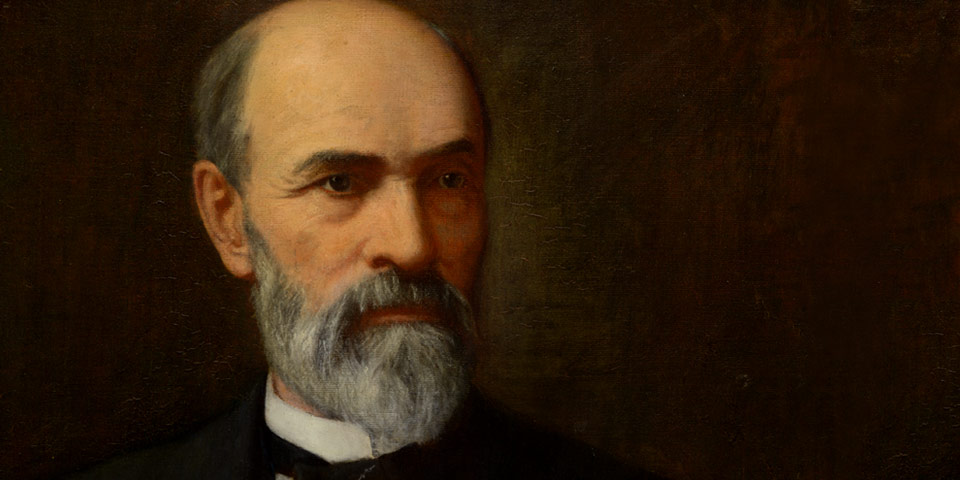
Biography
Another Country
Richard Edwards (1822-1908) was the second president of Illinois State Normal University. Edwards immigrated to the United States from his birthplace of Cardinganshire, Wales in 1833. Edwards was a student at the country’s first normal school, Bridgewater Normal School, and studied under famed educator Nicholas Tillinghast. He later earned both his science and engineering degrees from the Rensselaer Polytechnic Institute and worked for the Massachusetts State Board of Education. At the request of educator and politician, Horace Mann, Edwards moved to the Midwest and became principal of a normal school in St. Louis, Missouri. It was during his tenure in Missouri that ISNU’s first president, Charles Hovey, recommended Edwards for the presidency.
Building the Campus
During his fourteen years as president, Edwards sought funding for the expansion of the university’s campus. The rise in enrollment packed the only academic building on campus. Edwards not only requested money for a model school (a building where the university’s students could practice their teaching skills with local children who were enrolled in the secondary school), but also a new gymnasium and a dormitory. While none of these projects were completed during his presidency, two of the three were completed during his lifetime – North Hall (Model School), approved in 1891 and opened in 1892, and the new gymnasium (later named Cook Hall), approved in 1895 and opened in 1898.
Faith
Edwards was a devout Christian and believed that the education of children was a higher calling. Many of his university addresses featured religion. Edwards, a Presbyterian, was also a vocal supporter of the founding of the First Methodist Church in Normal, Illinois in 1865. After Edwards stepped down as ISNU’s president in 1876, he retired from education and served as a clergyman. Edwards was a prolific writer, penning hundreds of sermons that he delivered at houses of worship around the region. Over 200 original sermons currently reside in his family papers at the Dr. JoAnn Rayfield Archives at Illinois State University. Edwards died in March of 1906 and was buried in Evergreen Memorial Cemetery in Bloomington, Illinois with his wife and two of his eleven children.
Continued Research
-
Richard Edwards Presidential Papers Finding Aid
-
Richard Edwards Family Papers Finding Aid